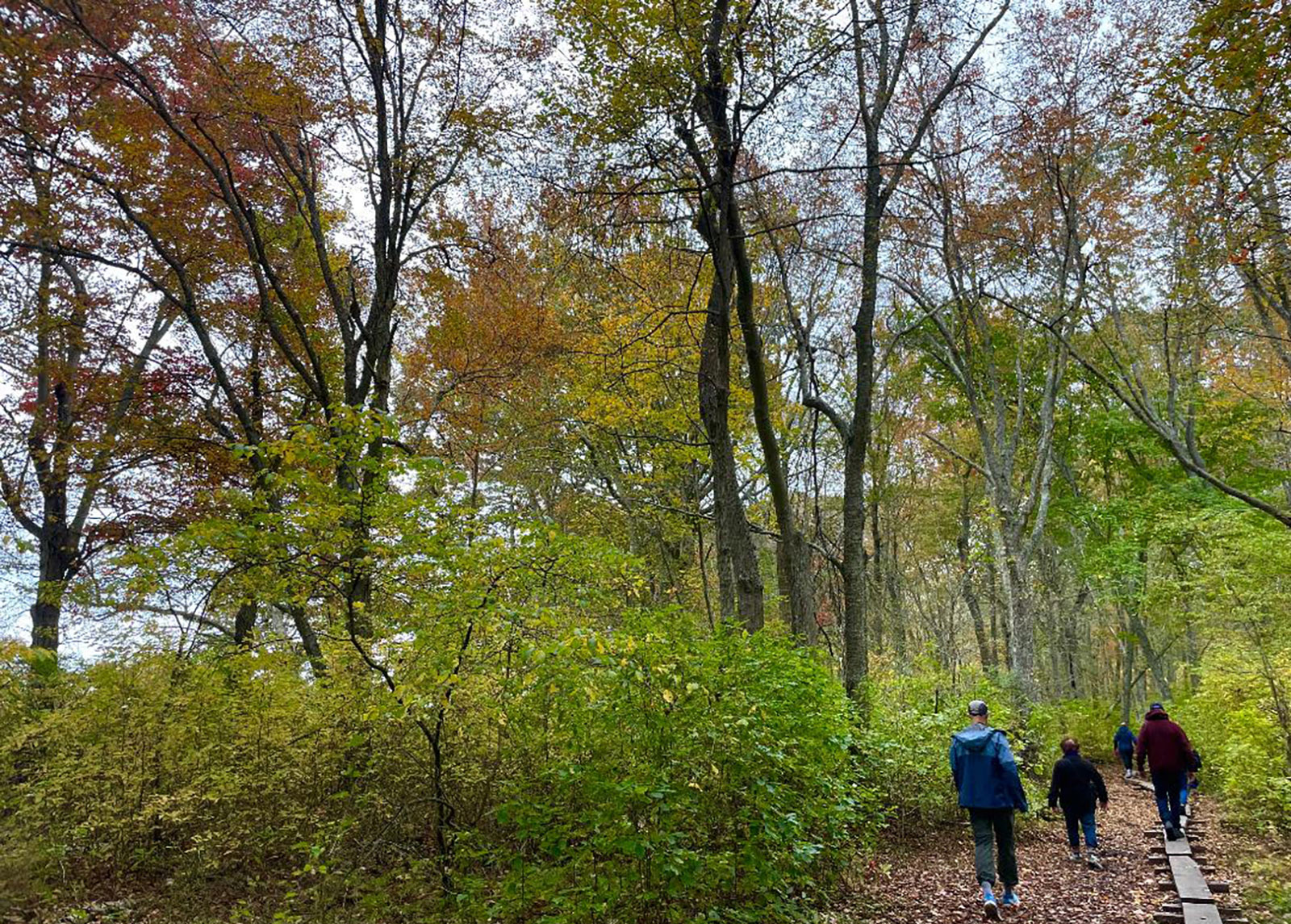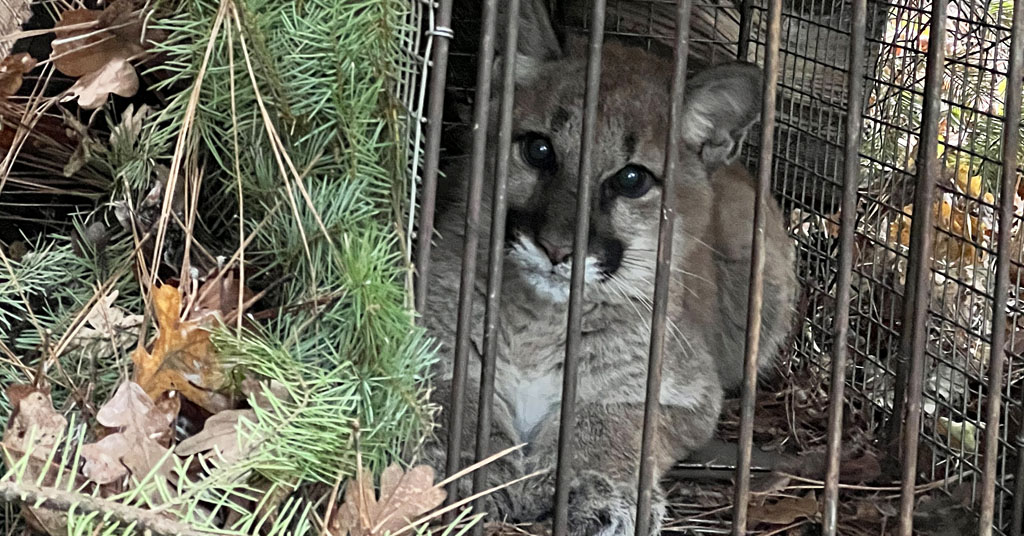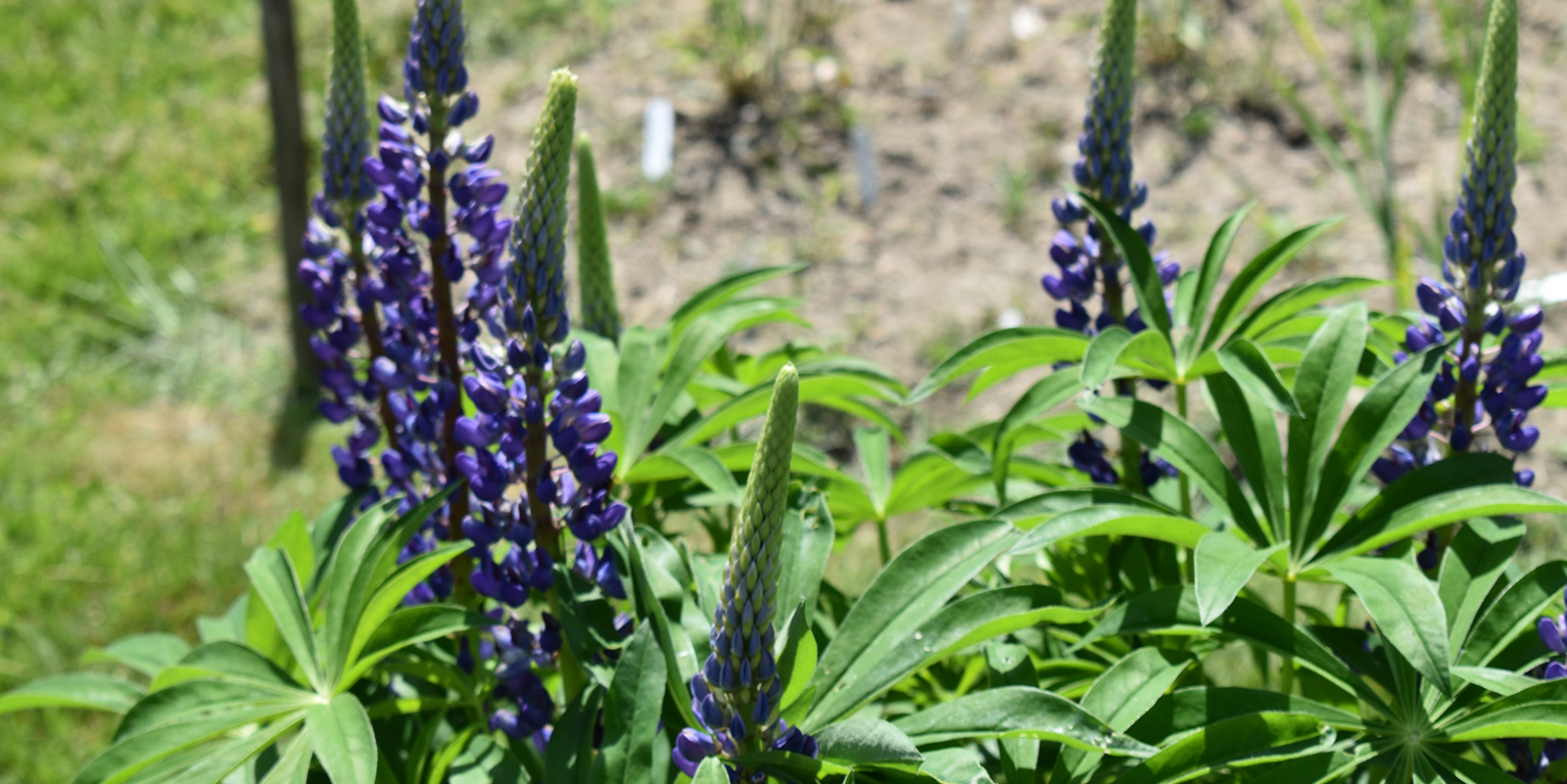Colors of Fall Brighten Sakonnet Greenway
Invasives and disease can damper foliage fun
October 26, 2023
PORTSMOUTH, R.I. — Walking through the Sakonnet Greenway, the leaves of the trees moved through the color spectrum, starting with the light greens of the understory and working up to bright reds of the highest foliage.
Some leaves, already turned and fallen off, littered the trails paths, coating the forest floor in dark maroons and browns and adding a sweet earthy smell to the fall afternoon.
“First pop quiz,” said Sean Grandy, pointing to a tree with three different types of yellowing leaves, “but nobody is graded.”
Grandy, stewardship manager for the Aquidneck Land Trust, led the Oct. 25 leaf-peeping walk during prime foliage season to talk about the leaves and also proper land management.
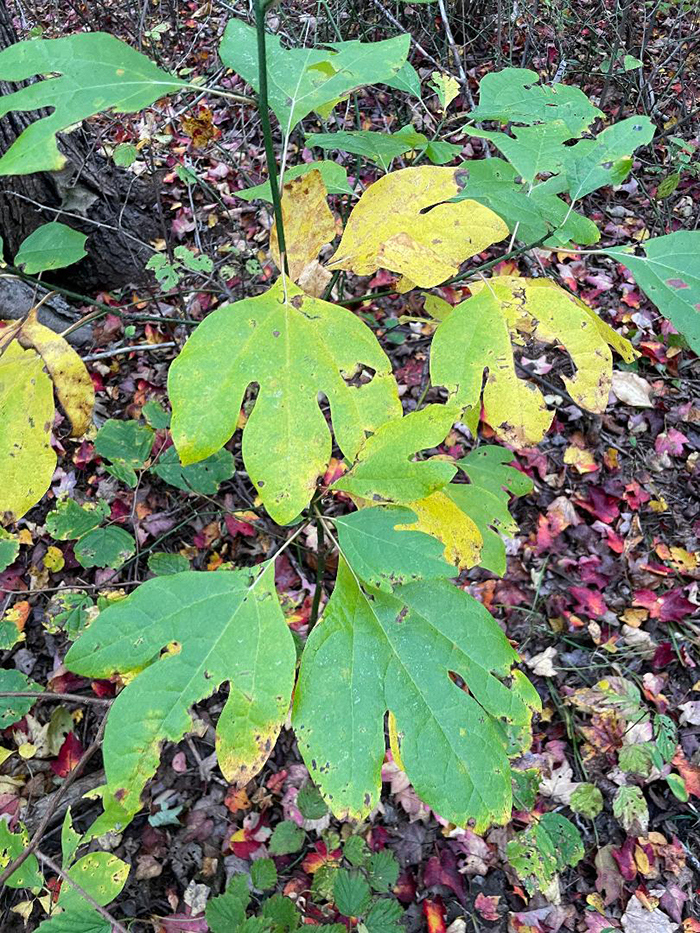
“Sassafras?” someone threw out a guess. And it was.
Besides its leaves having three distinct shapes, they also smell like fruit loops, said Grandy, noting that the root of the plant is used to flavor root beer.
Throughout the walk, Grandy and ALT conservation director Alex Chuman pointed out the beauty and the quirks of the land that the organization has helped preserve and the ways they are trying to manage it.
Grandy spotted a Virginia creeper next, a native species that turns a brilliant crimson in autumn. The vine’s berries are particularly nutritious to native birds, he said, because they have a co-evolutionary history — something native birds and invasive plants, such as porcelain berry (also spotted on the walk), don’t share.
Tim Phelps, whose family once owned part of the land that the Sakonnet Greenway now sits on when it was a dairy farm, asked how ALT manages the invasives.
Mostly mechanical techniques, Grandy said, which is a fancy way of saying that ALT staff have to tear the plants from their roots rather than use herbicides that can kill more than their targets.
In addition to issues with invasives, Grandy and Chuman said blights, such as beech leaf disease, are also issues they see on the land.
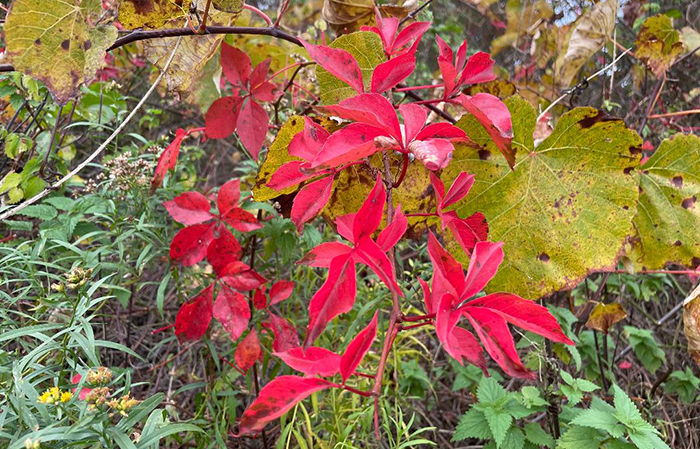
Pointing out a “leathery and kinda deformed” leaf, with a thick green band, Grandy showed the symptoms of the disease, caused by a nematode, to the walk’s participants. Usually papery thin, the leaves are impacted by the nematode living in their buds.
Grandy said ALT is trying some treatments to kill the blight and protect the trees but also planning in case those remediations aren’t successful.
“We have to plan for a mass fire out of beech trees in southern New England,” he said, and the tour got quiet.
Oaks, he said, returning offered some good news, as they are a hearty, native tree that could fill in gaps left by the beech. Though, their leaves don’t turn until late in the season.
ALT has already planted other native trees in the Greenway, in its stewardship practice, including witch hazel and spicebush, which Chuman pointed out on the tour. Spicebush in particular, which was bright yellow on the tour, can be a better, native alternative to forsythia.
Grandy picked a few of each plants’ leaves to pass around, because in addition to their color, they have lovely smells.
While they are beautiful on the trees, once the leaves fall they also play an important role in the ecosystem, Chuman said, making a home for little critters and returning nutrients to the soil.
“No judgment,“ Chuman prefaced, saying there are degrees of leaf salvaging that people can practice, from leaving piles untouched on the lawn to gathering them for mulch. “The sorta worst thing you can do is suck them all up and throw them in a landfill.”
